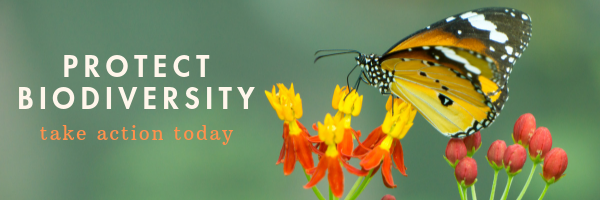06
Apr
Stop Dangerous Proposal to Allow Genetically Engineered Crops on National Wildlife Refuges in Southeast U.S.

(Beyond Pesticides, April 6, 2020) The Trump administration’s U.S. Fish and Wildlife Service (USFWS) is moving forward with a proposal to grow genetically engineered crops (GECs) on National Wildlife Refuges in the Southeast United States, including 131 refuges in 10 states, Puerto Rico, and the U.S. Virgin Islands.
The proposal is the subject of a draft environmental assessment and opens the door to escalating uses of GE crops and harmful pesticides in wildlife refuges.
In 2014, public pressure and lawsuits by environmental groups led to the Obama administration’s decision to phase out GE crops and ban neonicotinoid insecticide use on national wildlife refuges. On August 2, 2018, the Trump administration’s USFWS issued a memorandum that reversed the prohibition. The reversal allows the refuge system to make decisions on the use of GECs and neonics on a case-by-case basis in compliance with the National Environmental Policy Act (NEPA), which is also under attack by the Trump administration. The Center for Biological Diversity, Center for Food Safety, and others quickly challenged the 2018 reversal memorandum with a lawsuit.
National Wildlife Refuges are federal public lands specifically designated to protect fish and wildlife. The Southeastern Region is comprised of almost 4 million acres of refuge lands and waters that provide vital habitat for dozens of endangered species known to be imperiled by pesticide use—including bats, birds, freshwater mussels, and fish like the pallid sturgeon and Alabama cavefish. “It’s a no-brainer that this kind of pesticide-intensive agriculture shouldn’t be allowed on public lands that are critical to wildlife conservation and preservation of the unique ecosystems of the southeastern U.S.,” said Hannah Connor, an attorney at the Center for Biological Diversity.
Approximately 44,000 acres of refuge lands in the Southeastern Region currently incorporate farming. Corn, soybeans and rice are the most commonly farmed crops. Genetically engineered corn and soybeans are typically designed to survive spraying with herbicides like glyphosate, dicamba, and 2-4,D—allowing farmers to use these pesticides prophylactically after the crops have sprouted. Increased pesticide use often coincides with wildlife feeding and breeding times, when pesticides can be especially harmful.
Glyphosate use on GE crops have significantly contributed to monarch butterflies’ 80-90% decline over the past two decades. This is because the pesticide is a potent killer of milkweed, the monarch caterpillar’s only food.
USFWS’ Draft Programmatic Environmental Assessment notes the adverse impact of “commercial pesticides” (and their citations read “neonics”). Remarkably, the authors argue that genetically engineered crops, as opposed to “non-GEC,” use fewer commercial pesticides, an argument that has long been refuted—especially as most GECs are designed to be used with pesticides.
USFWS announced a public comment period for its proposal and Draft Programmatic Environmental Assessment. They will accept input through April 10, 2020. Comments and questions must be submitted in writing to [email protected] or mailed to Pamala Wingrove, Branch Chief, Conservation Planning, USFWS, Southeast Region, 1875 Century Boulevard NE, Atlanta, GA, 30345. Meanwhile, please ask your U.S. Representative and Senators to weigh in.
Letter to Congress
I am appalled at the U.S. Fish and Wildlife Service (USFWS) proposal to allow the cultivation of genetically engineered crops on National Wildlife Refuges in the Southeast United States, including 131 refuges in 10 states, Puerto Rico and the U.S. Virgin Islands.
The proposal would open the door to escalating uses of GE crops and harmful pesticides in wildlife refuges. In 2014, public pressure and lawsuits by environmental groups led to the Obama administration’s decision to phase out GE crops and ban neonicotinoid insecticide use on national wildlife refuges. On August 2, 2018, the Trump administration’s FWS issued a memorandum that reversed the prohibition. The reversal allows the refuge system to make decisions on the use of GECs and neonics on a case-by-case basis.
National wildlife refuges are federal public lands specifically designated to protect fish and wildlife. The Southeastern Region is comprised of almost 4 million acres of refuge lands and waters that provide vital habitat for dozens of endangered species known to be imperiled by pesticide use—including bats, birds, freshwater mussels, and fish like the pallid sturgeon and Alabama cavefish.
Approximately 44,000 acres of refuge lands in the Southeastern Region currently incorporate farming, with corn, soybeans and rice the most commonly farmed crops. Genetically engineered corn and soybeans are typically designed to survive spraying with herbicides like glyphosate, dicamba, and 2-4,D—allowing farmers to use these pesticides prophylactically after the crops have emerged. Increased pesticide use often coincides with wildlife feeding and breeding times, when pesticides can be especially harmful.
USFWS’ Draft Programmatic Environmental Assessment notes the adverse impact of “commercial pesticides” (and their citations read “neonics”). Remarkably, the authors argue that genetically engineered crops, as opposed to “non-GEC,” use fewer commercial pesticides, an argument that has long been refuted—especially as most GECs are designed to be used with pesticides.
I request that you urge USFWS to abandon its proposal because it is unwise and dangerous to the species that the refuges are mandated to protect.
Thank you.











Our Environment must be protected for the health of everyone at this crucial time in history.
April 7th, 2020 at 3:55 pmThis is a very bad idea. GMO-foods bring sickness, deformities and death, and kill the wildlife, insects, birds, bees, etc. Better idea would be to grow community gardens, where everyone can help and eat from!
April 16th, 2020 at 8:41 pm